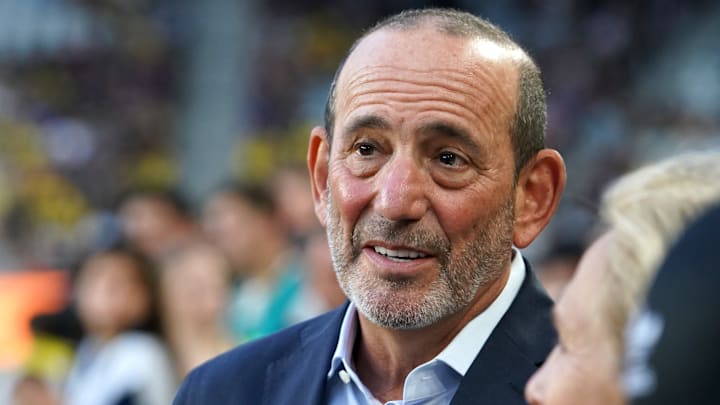Speaking of figures shaping sports, few names resonate with as great a force as Don Garber's in Major League Soccer. Celebrating 25 years at the helm, Garber not only rode the storms but managed to catapult the MLS into stratospheric levels that many would have deemed to be fairytale fiction back in 1999. We'll look at just how Garber changed the MLS, met many of the challenges, and put American soccer on the global map.
Follow MLS Multiplex on X (Twitter).
The Pre-Garber Era: MLS in Crisis
Before Don Garber took over, MLS was a league in trouble, still hanging on to the buzz from the 1994 World Cup held in the United States. In its four-year history, the league had 12 teams and was facing financial difficulties and a general lack of popularity. With empty stadiums and the absence of any big-name international soccer stars, the future of MLS was something less than bright. Many felt the league might not make it through the rough times ahead.
The Quiet Revolution: Expansion and Stars
When Garber took over in 1999, he had quite an ambitious but pragmatic vision. Immediately, his big move was expanding the league. What had been just 12 teams would balloon to 30, with more franchises like San Diego FC on the way. Each team added to the new crop wasn't just another market; rather, it was another chance to get into a new and local community to build a solid base of supporters.
But expansion alone wasn't enough. Garber knew the league needed big names that would draw in global attention. That's when he made the bet on international stars like David Beckham-who in 2007 joined LA Galaxy and changed the game regarding how soccer was perceived in the U.S. Since then, the list of stars to have graced the MLS has only grown: Lionel Messi, Thierry Henry, Kaká, Zlatan Ibrahimović, and more. These players didn't just raise the bar; they made MLS a destination for noted veterans.
The real game-changing moment was the signing of David Beckham in 2007. More than raising the on-field technical bar, Beckham's presence created the "Designated Player Rule," enabling each team to sign as many as three players whose salaries exceeded the league's cap. This opened the floodgates for other stars to follow, culminating most recently with the arrival of Lionel Messi at Inter Miami. Messi-recognized by many as the greatest of all time-didn't just bump up MLS's level of competitiveness; he brought in an unprecedentedly large audience to it, too.

From Emerging League to Global Powerhouse
Garber's plan was not only to import talent but to invest in local development, too. MLS academies started churning out international talents like Alphonso Davies and Tyler Adams. Davies, who moved from Vancouver Whitecaps to shine at Bayern Munich, is the complete embodiment of the success of these academies. It is not hyperbolic to state that MLS has moved from being an old graveyard to a springboard for the world's soccer elite.
Furthermore, Garber was the one who envisioned the Leagues Cup, a tournament in which MLS and Liga MX teams play against each other in an absolutely thrilling style reminiscent of the World Cup. The level of the game was raised, and the connections between U.S. and Mexican markets were strengthened, further growing MLS.
The Future: Where Is MLS Headed?
Cut to 25 years of progress under Garber's leadership, and MLS is in a position that few could have predicted. The league now boasts a multi-million-dollar deal with Apple that sees every game available for fans around the world to watch, free from regional restrictions. That, however, is only the tip of the iceberg in terms of technological and market innovations that Garber has brought to the sport.
But the real question is, what happens to Major League Soccer next? With the 2026 World Cup fast approaching, cohosted by the United States, Canada, and Mexico, North American soccer is about to enter a new chapter. Garber has made it crystal clear: MLS does not want to merely attend this party, it wants to be the life of it.
Challenges and Opportunities
With all the success, there remain monumental issues MLS must overcome: how to compete with the top European and South American leagues, how not to lose its best homegrown talent, and how to increase viewership inside the U.S. But if there is one thing Garber has proven over a quarter-century, it's a knack for righting ships and finding creative solutions for seemingly unsolvable problems.
One of the great ironies of Garber's journey is that when he was named commissioner, many doubted his ability to lead a soccer league. After all, he came from the NFL-a league of American football-and had no prior experience with "real football." Today, a quarter century later, it's hard to imagine MLS without him. His transformative vision mixed with an almost otherworldly ability to get deals done and to attract talent has made Garber one of the most respected sports leaders in the world.
